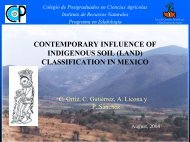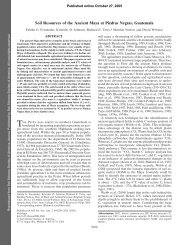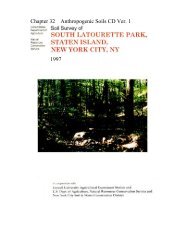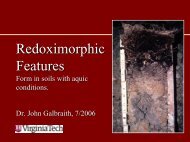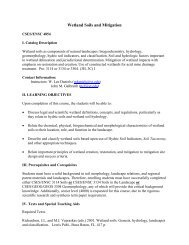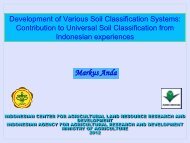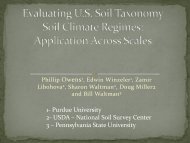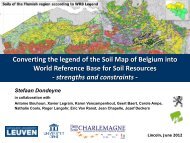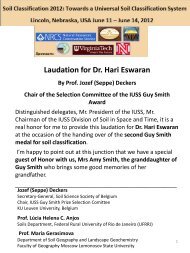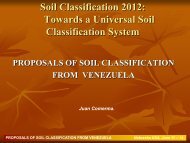Nebraska Soils Field Trip - Virginia Tech
Nebraska Soils Field Trip - Virginia Tech
Nebraska Soils Field Trip - Virginia Tech
You also want an ePaper? Increase the reach of your titles
YUMPU automatically turns print PDFs into web optimized ePapers that Google loves.
4th IUSS Soil Classification Conference <strong>Field</strong> Tour Guidebook<br />
Welcome to <strong>Nebraska</strong><br />
The University of <strong>Nebraska</strong>,<br />
<strong>Virginia</strong> <strong>Tech</strong>, and the NRCS<br />
National Soil Survey Center<br />
are proud to host the 4 th Soil<br />
Classification Conference of<br />
the International Union of Soil<br />
Scientists in Lincoln, <strong>Nebraska</strong><br />
USA, June 11-14, 2012.<br />
<strong>Nebraska</strong>, located near the center of the United States, is in the great agricultural region known as the<br />
Midwest or America’s Breadbasket. With 46,800 farms and ranches utilizing 45.5 million acres or about<br />
92 percent of the state's total land area, agriculture is <strong>Nebraska</strong>'s primary source of wealth and its<br />
dominant industry. Approximately half of the land is used for ranching with cattle grazing on the<br />
abundant rangeland prairies and pasture. Croplands, found predominantly in the central and eastern<br />
parts of the state, produce abundant corn, soybean, wheat, and small grains.<br />
Sustaining the health and productivity of the soil is important to the economy and people of <strong>Nebraska</strong>.<br />
<strong>Nebraska</strong> soils are a product of the soil-forming factors acting upon three dominant types of soil parent<br />
materials. Loess covers much of the state to varying thickness. The west-central part of the state is<br />
covered with extensive deposits of eolian sand that serves as the parent material for one the largest<br />
dune fields in North America called the <strong>Nebraska</strong> Sandhills. Livestock grazing there and in the northcentral<br />
part of the state is home to many of the state’s ranches. In the eastern part of the state, most<br />
soils have formed in clayey, Pleistocene till or in younger wind-blown loess originating from the Great<br />
Plains as well as the Missouri River flood plain in extreme eastern <strong>Nebraska</strong>.<br />
The University of <strong>Nebraska</strong> at Lincoln, founded in 1869, is the state’s Land Grant University and has one<br />
of the nation’s largest and most successful agricultural colleges. The Institute of Agriculture and Natural<br />
Resources includes the College of Agricultural Sciences and Natural Resources, the Agricultural Research<br />
Division, the Cooperative Extension Division, and the Conservation and Survey Division.<br />
The College of Agricultural Sciences and Natural Resources (CASNR) offers 28 academic programs to<br />
students. University of <strong>Nebraska</strong>–Lincoln scientists have been some of the most-cited in the world in the<br />
last 10 years in the area of agricultural research according to the IS1 Essential Science Indicators Report.<br />
Scientists in the UNL Institute of Agriculture and Natural Resources (IANR) alone published 1,028 papers,<br />
which were cited 6,056 times from January 1994 through January 2004.<br />
The goal of CASNR is to prepare students as leaders for a future in which demands on food, energy and<br />
water systems will challenge sustainability. The areas of study are broad and span animal, plant, and<br />
human health and well-being, earth systems analysis, agricultural production and processing, global<br />
3





